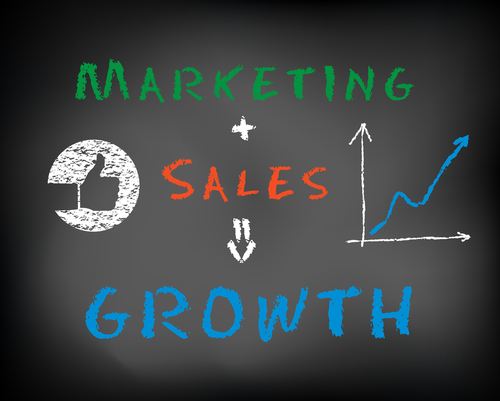 Marketing software can help companies scale and automate important marketing processes of all kinds, from lead nurturing to data analysis to sales process optimization and beyond. Regardless of the software company behind it, these solutions are typically designed to help companies save time, identify opportunities, and close the gaps internally or externally that keep them from achieving their goals.
Marketing software can help companies scale and automate important marketing processes of all kinds, from lead nurturing to data analysis to sales process optimization and beyond. Regardless of the software company behind it, these solutions are typically designed to help companies save time, identify opportunities, and close the gaps internally or externally that keep them from achieving their goals.
The goal in most businesses is pretty straightforward: increase revenue and more importantly, profits. The process to get you there is nowhere near that simple. Marketing software is meant to:
- make it easier to increase multi-channel visibility,
- align sales and marketing efforts (often through CRM integration),
- reach the right people at the right place and time with enhanced targeting, and
- help nurture and maintain relationships.
Yes, marketing software is growing and companies can no longer deny its value, in automating once manual and time consuming tasks, offering more valuable insights and ultimately saving time and money while increasing revenue.
That is, if you’re using it right.
Sirius Decisions predicts marketing automation technology adoption will increase to 50% by 2015, yet less than 25% of companies already using a platform feel they are using it to its full potential. Why the disconnect and how can you make the most of what is, for many, a costly investment?
See if you might be making one (or even more than one) of these mistakes with your online marketing software and how to fix it.
The Problem: Poor alignment between sales and marketing teams
Confusion over which department is responsible for a particular type of messaging, when to actually call a lead dead versus sending it back for nurturing, or plain old internal politics can be a killer, even for the best marketing automation system.
Sales and marketing absolutely have to work together, driven by a clear process. To that end, education is key.
The Fix: Marketing automation platforms want their clients to drive maximize revenue growth by using software and usually offer a wealth of training resources. Marketo, for instance, has an entire collection of e-books and presentations dedicated to sales and marketing integration. InfusionSoft also has a collection of e-books, webinars and videos.
Use these tools by having a weekly training session with both teams, to further each individual’s understanding of the “hows” and “whys” in order to enable them to go forward as a team.
The Problem: You don’t have enough relevant content to feed the beast
Lead generation and nurturing prospects to conversion require content, often more than an organization is accustomed to providing. The transition to more thoughtful, targeted content creation can also be a challenge, as writing off the top of your head or simply publishing to have content out there isn’t effective.
The fix: A clear, scalable content creation process is critical to the success of your automated marketing. Feed the content beast with high quality, original content that aligns with your business goals and meets the needs of your address at that specific point in their purchasing decision. We have published a wide variety of content creation resources on the TopRank blog to help you get started.
The Problem: You aren’t using the right solution for your business needs
This one is particularly tough, because it can be difficult to admit it might have been a mistake to go with a specific piece of marketing software and even harder to justify the expense and time of switching. However, if you need the platform to accomplish specific tasks and it can’t, or if there are integration issues that simply cannot be fixed, it might be necessary to examine other options.
The fix: Exhaust all options; talk to their support team, determine whether your issues may be a case of user error or simply not using the platform properly. Compare other marketing software solutions and do your due diligence in:
- asking questions,
- taking a trial,
- speaking with other users,
- and having each of your teams (IT, sales, marketing, content) involved in the decision-making process.
The Problem: You don’t have all of the data, or the right data, needed to make the best decisions
Even the best marketing software can’t produce optimal results if you aren’t feeding it the right data. All customer-facing systems must integrate with your marketing software in order to share customer and prospect data critical in effectively segmenting and targeting.
The fix: Run tests comparing your data in different databases to that within your marketing software to determine if integrating the two might offer deeper insights that can assist in more precise targeting. In Scribe’s State of Customer Data Integration study, they found that just 18% of respondents reported having full integration between their CRM and marketing automation software. Close that gap for a more holistic view of their needs and how you can address them.
Set Your Business Up for Marketing Software Success
Marketing software can offer huge benefits to companies, yet many struggle to realize those results in practice. Blogger Jody Blome recently shared the story of his previous company’s epic failure using marketing software, with a critical yet necessary investigation into how things went so wrong.
Prepare yourself for success by having clear goals going into the process of selecting a solution and a detailed process on how it will be used within your company. Empower sales and marketing employees to use it properly – and in tandem – for best results.
Are you using a marketing software solution in your business and what are some of the challenges you’ve overcome? Share your thoughts or questions in the comments.
Image via Shutterstock.


